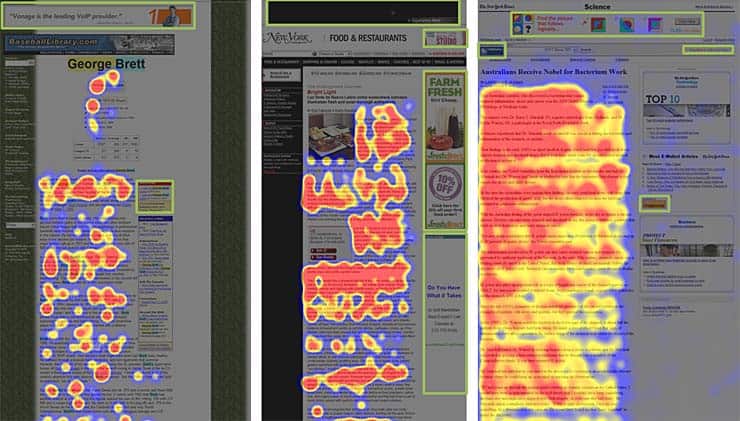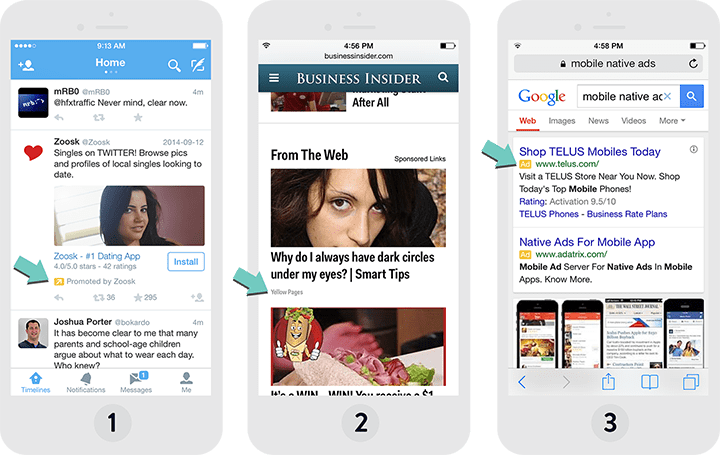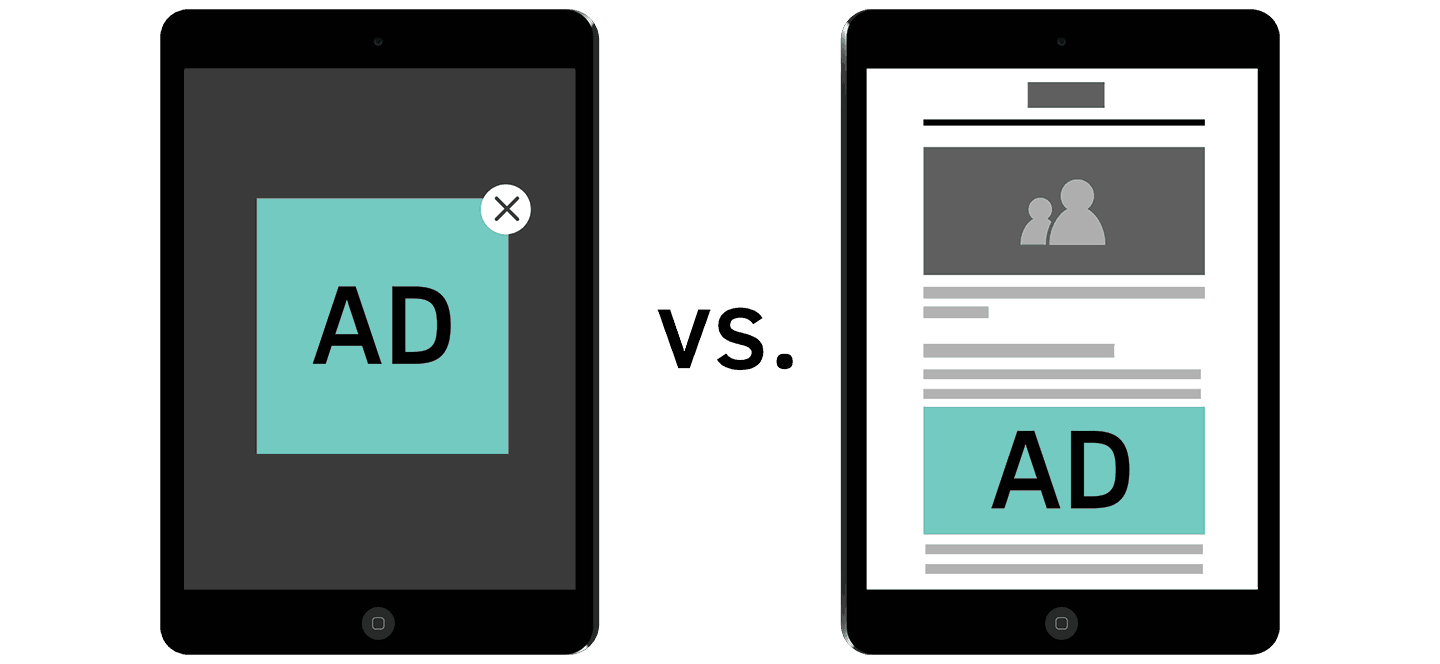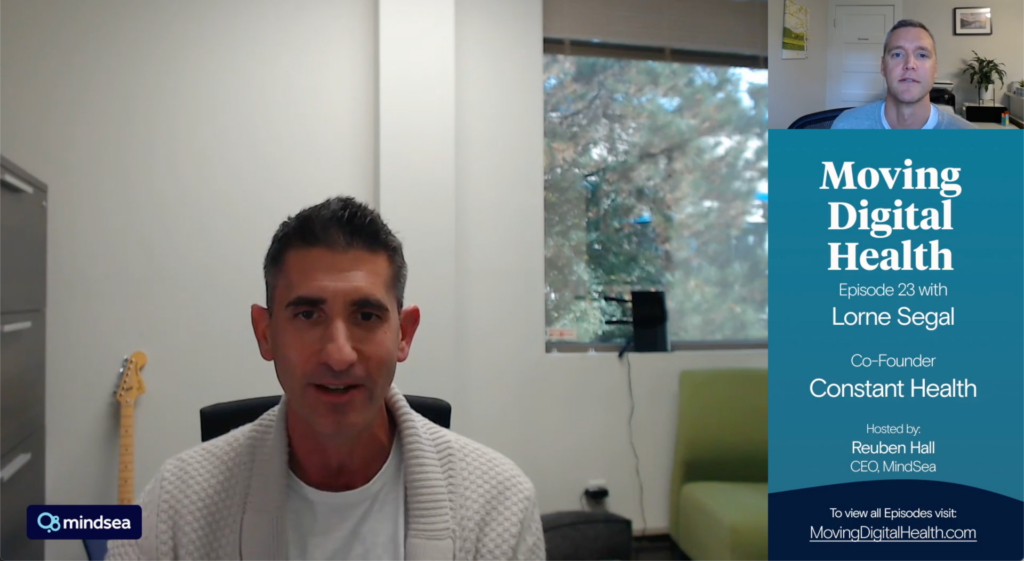It’s no secret, newspapers are struggling as their audiences transition from print to digital content consumption. Black humour in the newsroom refers to the obituary columns as the “subscriber countdown.” With print revenue on a steady decline, and digital display revenue struggling to fill the void, new solutions are required.
Enter native ads

The concept of native advertising has been around for a long time. In the publishing industry it took the form of advertorials or sponsored content. Recently, online native ads have moved far beyond the advertorial, blurring the lines between content and advertising. Investment in the format is soaring: Business Insider predicts that spending on native ads will reach $7.9 billion this year and grow to $21 billion in 2018. On the mobile front, Facebook is gaining significant market share with its native ad strategy; it is predicted to claim 21.7% of the $31.45 billion dollar mobile ad market in 2014. Digital publishers who rely primarily on display advertising revenue may be leaving money on the table by not exploring this revenue stream.
What is native advertising?
Unlike traditional ads, native ads are displayed in the context of the user’s experience. These ads match the look and feel of surrounding content, making them less intrusive and increasing the likelihood that readers will click through.

“Heatmaps from eyetracking studies: The areas where users looked the most are colored red; the yellow areas indicate fewer views, followed by the least-viewed blue areas. Gray areas didn’t attract any fixations. Green boxes were drawn on top of the images after the study to highlight the advertisements.” — Image and caption from Nielsen Norman Group
Why it works
This type of advertising is gaining popularity because traditional display ads don’t drive enough engagement. Users have developed “banner blindness,” ignoring anything on the page that looks like an ad. Those ads displayed in the content area fare slightly better — the reader has to at least scroll past them — but anything anchored in the header or sidebar is often ignored. Native advertising goes a step further to combat banner blindness by making ads feel more like content.
Top three formats for native advertising

- In-Feed Units – Facebook, Twitter, Yahoo
These units appear within a list of content and are generally the same size or larger than an actual block of content. In-Feed native ads are especially effective on mobile where the user is scanning a single column of content. - Recommendation Widgets – Outbrain, Taboola, Disqus
A list of recommended stories usually placed in the footer of an article, often linking to external websites. - Paid Search Units – Google, Bing, Yahoo
Presented in the same form as organic search results at the top of the list.
Creating native ads
As shown in the examples above, native advertising can take many forms. Traditional native ads, like sponsored content and advertorials, can often be created in-house or by partnering with the advertising customer. But there are also platforms which specifically focus on native advertising.
Sharethrough is a good example. It connects publications with those promoting their content, and streamlines the process of embedding native ads into a digital property. The platform touts its focus on quality content and the ease of matching a site or app’s visual design.
Separation of church and state
As lucrative as native advertising can be, there are dangers to avoid when implementing them. The main criticism is that the very nature of native advertising erodes the principals of independent journalism. HBO’s John Oliver slams the ad format, likening the separation of news and advertising to the separation of guacamole and Twizzlers, “Separately they’re good, but if you mix them together, somehow you make both of them really gross.”
Traditionally, large publishers have a dedicated commercial editorial team that only writes sponsored content. This has helped to ensure separation between the editorial and advertising departments. But advertising departments have always pushed to enlist the storytelling skills of the newsroom to benefit their customers. To some extent, native advertising is what happens when those in the advertising department get their way.
Journalistic integrity is important, but news organizations are businesses. Bryan Goldberg of PandoDaily puts this in perspective well in his article “The separation of ‘church and state’ in publishing”. His argument is simple: journalists can’t stand on integrity and expect everyone else to magically solve all monetization issues. Times change, and publishers need everyone on the team working together toward success. For a publication to continue producing high-quality journalism, it has to be able to pay its staff. In an age where it’s becoming more difficult to convince readers to pay for news, native advertising is a reasonable way forward.
Reader benefits
Native ads aren’t good news for advertisers alone. By definition, native ads are less intrusive than many other forms of advertising; specifically, pop-overs or banners which constantly overlay content. If organizations can find ways to replace these more annoying ad types with native advertising, they can increase user engagement. A more engaged user will read greater amounts of content, which increases the number of ads impressions.
More than that, native advertising collaborations can lead to interesting and well received content which readers are more likely to share. For example, The Onion partnered with H&R Block to create this humorous piece poking fun at tax form procrastinators. More famously, The New York Times partnered with Netflix to create an extremely well researched and heavily shared article about women inmates. Ads like these are significantly more valuable to readers, not to mention that they are timeless.
Native advertising checklist
Here are some key points to keep in mind when implementing a native ad campaign:
- Clear disclosure
It’s extremely important that the reader understand when a piece of content is sponsored. A fine line exists between ads that fit in well with content and ads that are disguised as content. Ads that look like content are more noticeable than display units, but are better accepted by users if they’re clearly flagged as advertising. If ads are disguised too well they will quickly incite rage and discredit your product. The Interactive Advertising Bureau (IAB) recommends that “Regardless of context, a reasonable consumer should be able to distinguish between what is paid advertising vs. what is publisher editorial content.” - Be relevant
For native ads to pay off, the content must also be relevant to the reader. Google doesn’t just throw random ads in your search results. The ads are based on your search terms and are flagged clearly with an “Ad” label. Unrelated or low quality native ads displayed beside high quality content will only lower the reader’s opinion of that content creator’s brand. If native ads are to fit in better with your content, they should be treated with a similar level of editorial stringency. It’s essential to maintain ad relevance and quality so readers aren’t left with a bad experience. - Measure and adjust
When adding native ads to your publication, you need to strike the right balance between advertising and reader concerns. The only way to do this is to vigilantly measure your audience’s attitude. If possible, split test a segment of your audience. This allows you to measure how native ads affect engagement metrics like time-on-site. If a partner is providing low quality ads, or the ads aren’t relevant, you need to know as soon as possible to avoid losing readers.
Go native
Native advertising works, and those taking advantage of it are seeing the rewards. That said, you need to balance journalistic integrity with the increased revenue these ads can provide. The key is to put the reader first, and carefully measure sentiment. Cluttering your property with low quality or poorly targeted ads might force your readers elsewhere, losing you money in the long term. But this format can make a huge difference for organisations who can find the right partners, or who develop ads in-house. There’s never been a better time to go native.
Are you a publisher looking to enhance your digital strategy? Last year, MindSea partnered with The Chronicle Herald to redesign and redevelop their iOS app. The app went on to be recognized by Apple in their Best of 2013 category, and was awarded second place in the International News Media Association Awards. We also developed the Android and iOS apps for the Postmedia Network. If we’ve piqued your interest, you can get started now with our App Design Guide or get full details on our approach and pricing with a quick email to hello@mindsea.com.
[publishers-signup]



